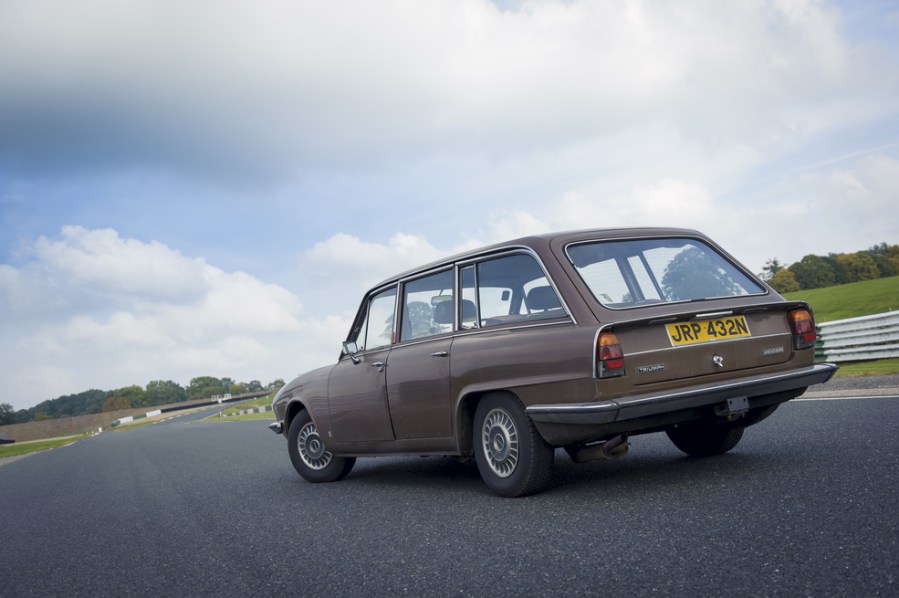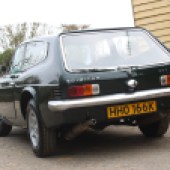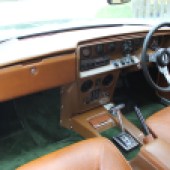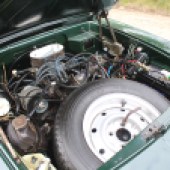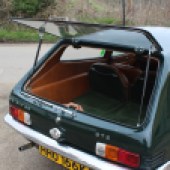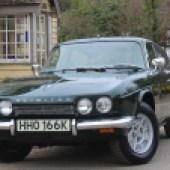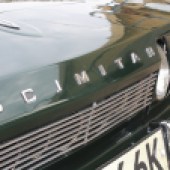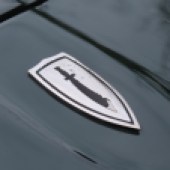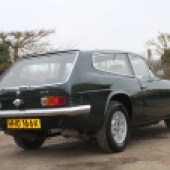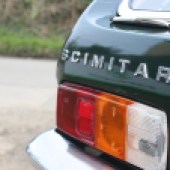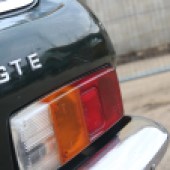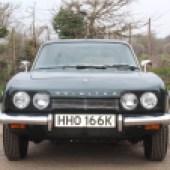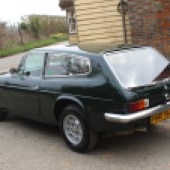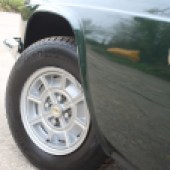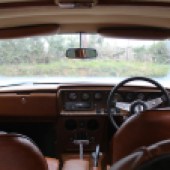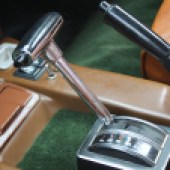Fancy a family-sized GT with corrosion-proof bodywork and V6 power? Look no further than the Reliant Scimitar GTE
Words: Rob Hawkins Images: Jack Grover
Reliant is best known for its three-wheelers, but its unsung hero is the four-wheeled Scimitar, particularly the estate-shaped GTE produced from 1968-1986. Powered by a V6, this grand tourer comfortably accommodates four people and luggage for long trips.
The Scimitar story began in 1964 with the coupé-shaped GT, designed by Ogle and initially built on a Reliant Sabre chassis with a Ford 2.6-litre straight-six. After 296 were made, the Essex 3.0-litre V6 was introduced in 1967. A year later, the GTE debuted, becoming the most recognisable model, alongside 442 GTC convertibles.
The GT SE4 led to the SE4a and SE4b. The GTE started as the SE5, followed by the SE5a with 145bhp and a 125mph top speed. In 1976, the wider and longer SE6 featured rubber bumpers, better soundproofing, and optional power steering. The SE6a of 1977 offered improved steering, brakes, and a strengthened chassis. The 1980 SE6b introduced the 2.8-litre Cologne V6, chassis reinforcements, and exterior tweaks.
Production ended in 1986 but was briefly revived by Middlebridge in 1989 with a 2.9L fuel-injected V6, five-speed manual or four-speed automatic gearbox, and 15-inch wheels. Only 77 GTEs and one GTC were built before production ceased in 1990. Graham Walker later acquired the rights and continues limited production.
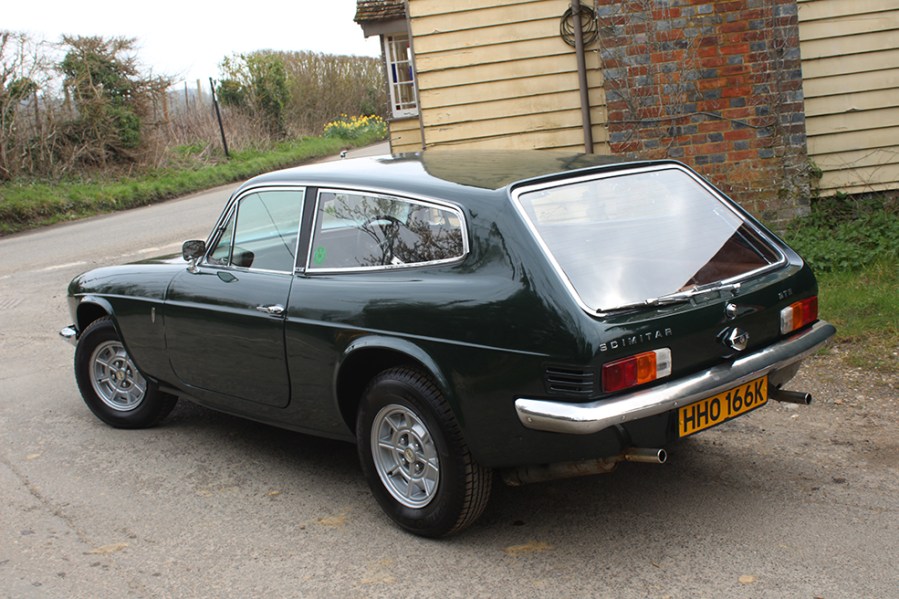
Bodywork
The Scimitar’s chassis is a simple ladder frame with two long steel box sections, outriggers, and an additional box section for the outer sill. The engine, gearbox, live axle, and suspension mount to the chassis, while the GRP body is secured with just 18 bolts. However, removing it can take days if corrosion has taken hold in inconvenient ways. SE6 models are more complex, requiring bumper and front chassis panel removal.
Galvanisation from 1981 onward doesn’t guarantee rust protection today. Chassis corrosion is a major concern, especially on MoT-exempt pre-1985 cars. While repair sections (such as outriggers, priced at £25-£40) are available, welding with the GRP body in place is a fire hazard. Common jobs like front and side outriggers can be done carefully, but for complex repairs like trailing arm mounts, cutting the floor for access is necessary. Most of the chassis is visible from underneath, so inspect it with a torch and a rubber-handled screwdriver.
A glass fibre respray can exceed £5000, so factor this into your budget. Tatty paint may require a full respray for proper colour matching by now. Look for spider cracks — tiny fractures in the GRP — and micro blisters, which indicate trapped moisture. Sanding and rebuilding the surface is the best fix for cracks, while micro blisters require more than just polishing. Avoid storing the car under a cover that doesn’t allow the bodywork to breathe.
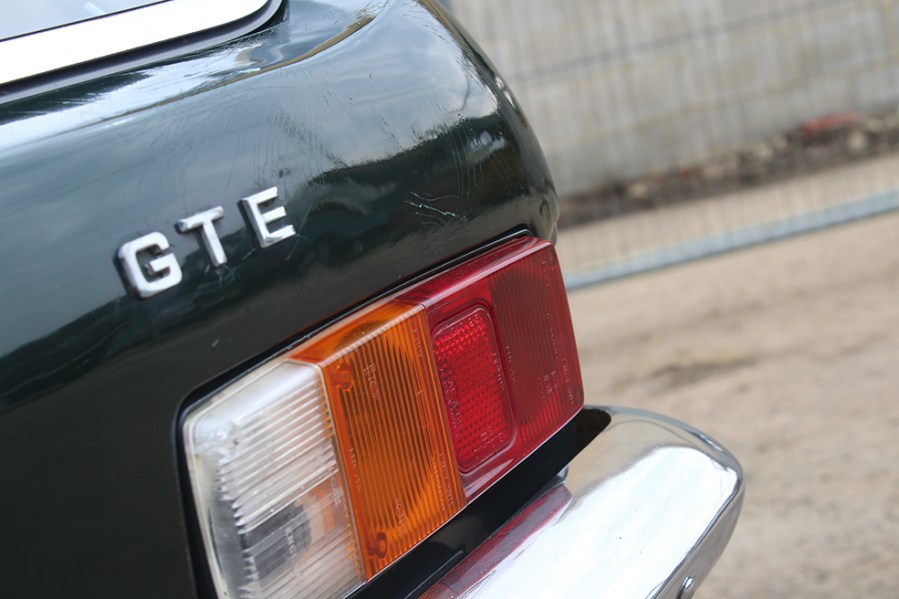
Engine and transmission
The Ford Essex and Cologne V6 engines are strongly supported by a range of classic Ford specialists, so parts availability is good. The only possible problem concerns the camshaft gear on the Essex, which consists of a composite material that can wear, resulting in engine noise and eventually running issues. The solution is to fit a steel or aluminium replacement, which is noisier but longer lasting. Misfires on the Essex V6 can sometimes be caused by wear of the distributor drive, which can be replaced for around £25.
For all engines, listen for leaks from the cast iron exhaust manifolds, which can be caused by cracks. Budget for around £175 for a reconditioned cast iron exhaust manifold, or £275 for a stainless-steel tubular assembly.
With the spare wheel mounted in the front of the engine bay and the engine squeezed between it and the bulkhead, cooling issues can arise, so leave the engine running and watch the temperature gauge, ensuring the electric fan (if fitted) is automatically activated when the coolant gets too hot.
The four-speed manual gearbox benefits from overdrive (fitted as standard on most models apart from a short run of the SE5a) for relaxed cruising. Check that the overdrive engaged and disengages with the dash switch and disengages when in reverse. These gearboxes are known to jump out of first and second, so look for this when moving up and down gears. If gear selection is notchy and difficult, this may be caused by a problem with the clutch release fork, which can become damaged.
A Borg Warner Type 35 three-speed automatic gearbox was initially installed in the Scimitar SE5; oil leaks are common so look for service evidence. Any automatic gearbox in a Scimitar SE5a or later model should be a four-speed Ford C3 type, as fitted to Fords including the Mk1 and Mk2 Granada. Its front oil seal is prone to leaking but new ones are available.
A Salisbury 4HA live axle is fitted to all vehicles, initially with a 3.58:1 final drive ratio for all manual gearboxes, which was later changed to 3.31:1. For automatic gearboxes, this was a lower 3.07:1, which was changed to 3.54:1 on the SE6b with the less torquey 2.8 V6. Check around the casing for signs of oil leaks, which may mean the seals have blown, but can also be caused by a blocked breather hole on the top of the casing.
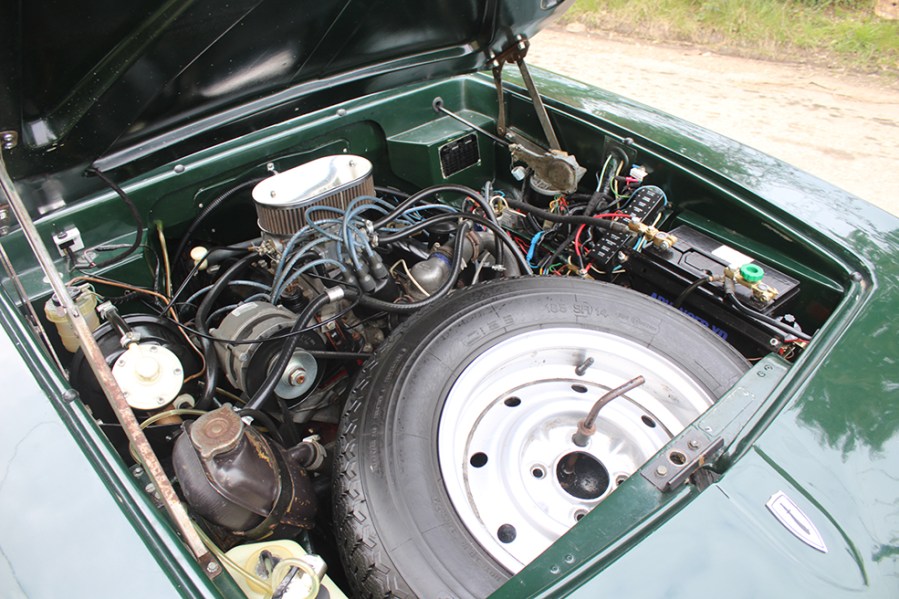
Suspension, steering and brakes
All models prior to the SE6a were equipped with Girling brake components (single-circuit up to the SE5a, then dual-circuit from the SE6), which included servo-assistance with three-pot calipers and solid discs at the front and drums at the rear. This was changed to Lockheed components, which featured two-pot calipers with solid discs at the front and larger diameter rear drums. All brake components are available and reasonably priced today.
If the pedal feels hard or the brakes seem to stay on after braking and letting go of the pedal, the servo may have failed: a replacement with Scimitar brackets can be had for around £185. A brake master cylinder is quite expensive at around £200–£300.
The front suspension consists of upper and lower wishbones attached to a vertical link via a ball joint at the top and a trunnion at the bottom. There’s also a coil-over at all four corners and an anti-roll bar at the front. Check the condition of the springs, looking for fractures and corrosion – a new spring costs around £55 – and also look at the lower mounting panel, which can corrode but costs around £90 to replace. Known as the front chassis panel, this consists of individual panels bolted together on all models up to the SE6a, whereas on the SE6b onwards it’s one prefabricated front support panel which is bolted onto the chassis.
The rear suspension consists of trailing arms and radius arms to locate the live axle, along with coil-overs. Check all of those arms for corrosion and damage, and if the handling feels vague at the rear, question whether the bushes are worn. Many suspension components are readily available today.
With rack-and-pinion steering fitted to all models, power steering became an option from 1976 onwards with the introduction of the SE6. In all cases, check the steering is smooth to operate and not notchy or vague. If power steering is fitted, there’s a belt-driven pump on the front of the engine, so check around it and the pipework routed to the steering rack for fluid leaks.
Cars with the Dunlop wheels (which look like MGB GT V8 items) need careful inspection. These wheels are a composite design with a steel rim riveted to an aluminium centre, and can cost upwards of £300 per corner to restore.
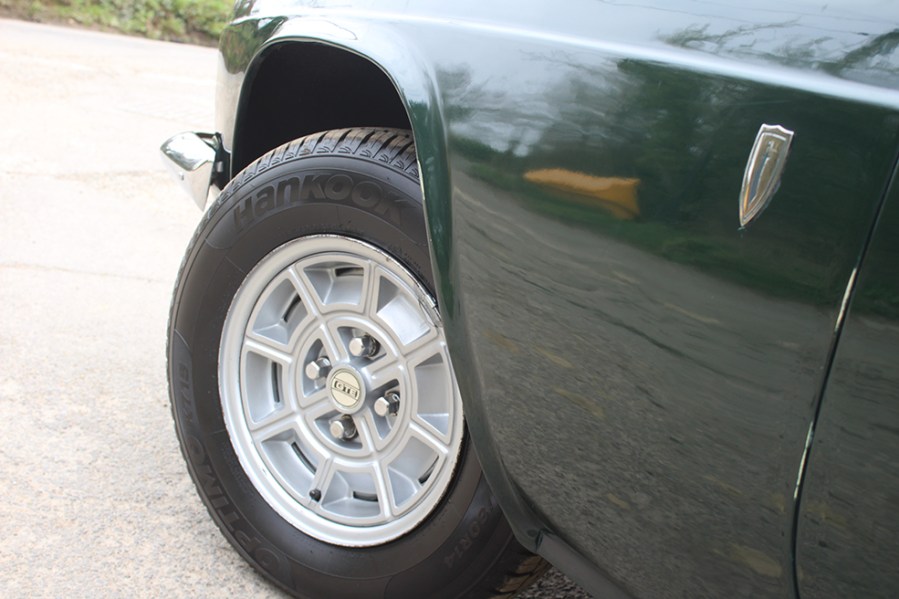
Interior, trim and electrics
Interior and exterior trim is scarce, especially large items like bumpers, though exterior lighting is easier to find due to shared parts with other vehicles. Original SE5s only had black vinyl trim, with the SE5a bringing in tan and leather options, and the SE6 having the option of blue and nylon seat facings. The latter are prone to UV degradation over time, so don’t be surprised if they’re baggy or worn through. Front seat frames can crack with age, especially if former owners have been on the larger side – make sure the seats are still supportive, and if not, negotiate based on the need for replacements.
Check the SE5a’s vacuum-formed dashboard for cracks and the headlining for sagging (£250 to replace). A new centre console costs £245, with veneer inserts an extra £95.
All models use 12-volt negative earth electrics (except the SE4 GT, which had positive earth). Common electrical issues include corroded connections and switch contacts, which can often be repaired. Extra, unnecessary wiring from previous stereo and other modifications is also common.
Test electric windows — they are typically slow but should function. A new regulator (mechanism and motor) costs £187. If a rear wash/wipe system (introduced in 1969) is present but non-functional, note that a replacement motor costs £255, and a worn wheel box is £45. A desirable upgrade is a heated windscreen, now widely available for around £400.
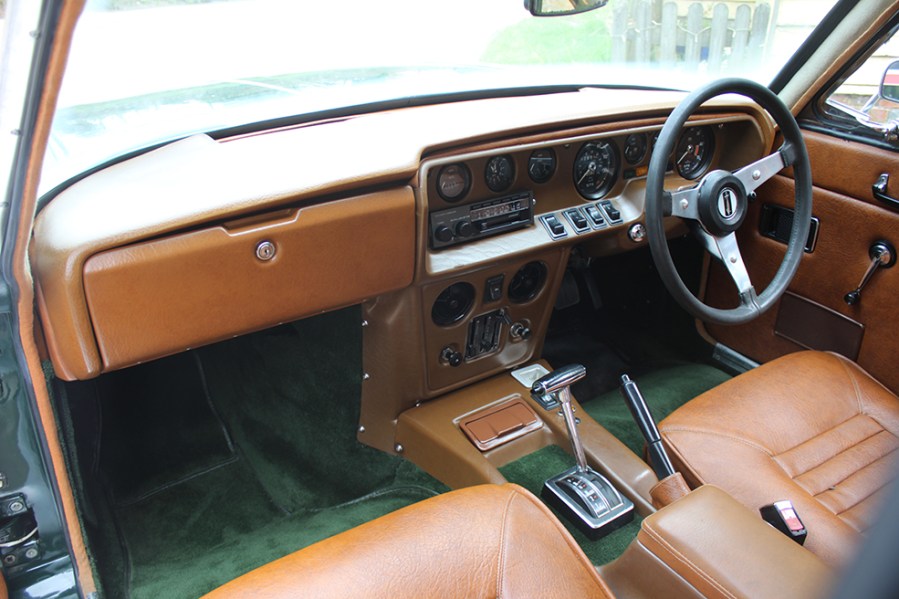
Our verdict
The Scimitar GTE is an all-round usable classic car that’s more affordable than equivalent makes, and with the bonus of a rust-free GRP body. But don’t forget that there is a steel chassis underneath, so be meticulous with any inspection and check parts availability for anything you may need.
One of the main appeals of the Scimitar GTE, aside from its practicality and performance, is the cost of buying one. Indeed, the GTE deserves a much better fate than the classic market has given it so far. Restoration projects sell for around £3000, but a roadworthy example generally costs around £8000–£15,000. Even an earlier SE4 GT or a potentially more collectable GTC tend to sell for broadly comparable prices.
That compares well with similar classics such as the Volvo P1800 ES, Ford Capri and Jensen Interceptor, and with over 10 per cent of the 14,000 Reliant Scimitar GTEs built reckoned to have survived, availability is surprisingly good.
Reliant Scimitar GTE timeline
1968
SE5-generation Reliant Scimitar GTE shown to the public for the first time. The new car brought a new longer chassis over the SE4 car it replaced, along with new suspension, a new fuel tank, a rollover bar and a relocated spare wheel
1970
Borg-Warner 35 automatic transmission added as an option
Princess Anne receives her first Scimitar for her 20th birthday, a manual SE5 car, starting a famous love affair. She has reportedly owner eight other Scimitars since
1971
Four-speed manual gearbox with overdrive added
1972
SE5A improvements added, including power boost and a curved plastic dashboard (below)
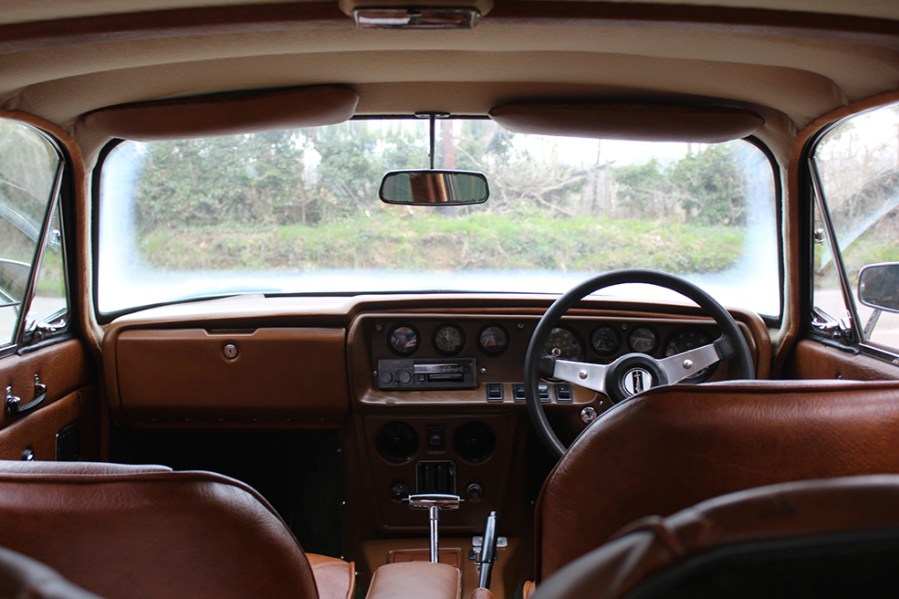
1975
SE6 version arrives with a longer wheelbase for more rear legroom, wider track, larger headlights, rubber bumpers and optional overdrive on 3rd and 4th gears
1976
SE6A specification adds Lockheed brakes and revised suspension
1980
Scimitar GTC convertible launched, also known as the SE8B
SE6B version arrives with 2.8-litre Cologne V6 power and various mechanical and chassis updates
1986
Scimitar production ends
1989
Middlebridge resumes production with modern appointments including a fuel-injected 2.9-litre V6 and 15-inch wheels
1990
Middlebridge production ends
Reliant Scimitar GTE alternatives
MGB GT
Fancy a stylish British 2+2 with a bigger club scene? The stalwart MGB GT offers nimbler handling, a simply vast following and arguably prettier Pininfarina styling over the Reliant, but will be too obvious for some.
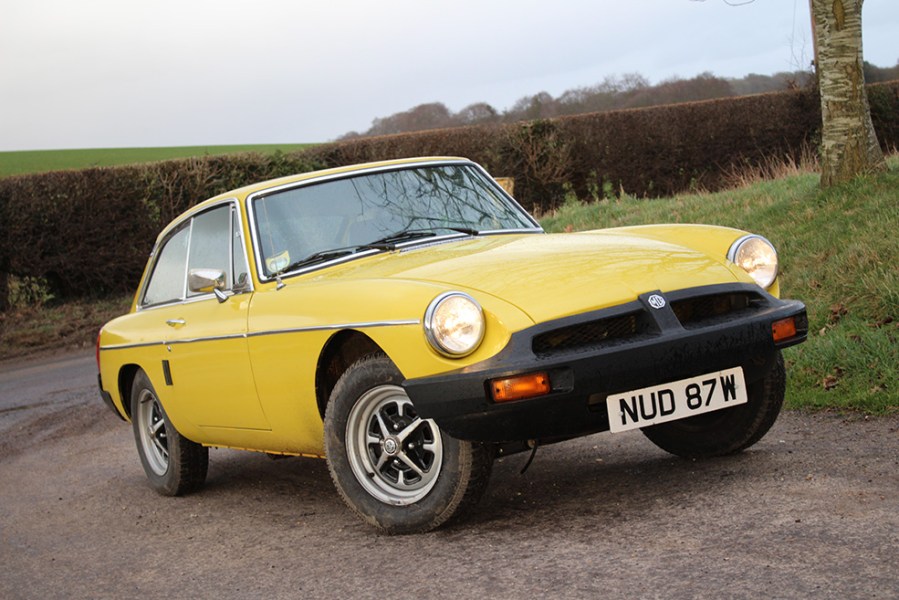
Triumph 2000 Estate
If, however, a load-lugger with elegant lines and a six-pot soundtrack is your bag, the estate variant of the handsome Triumph 2000 offers all the benefits of the Scimitar with the addition of rear doors. Obviously rust becomes a concern with a steel body, and it simply doesn’t look as exotic.
